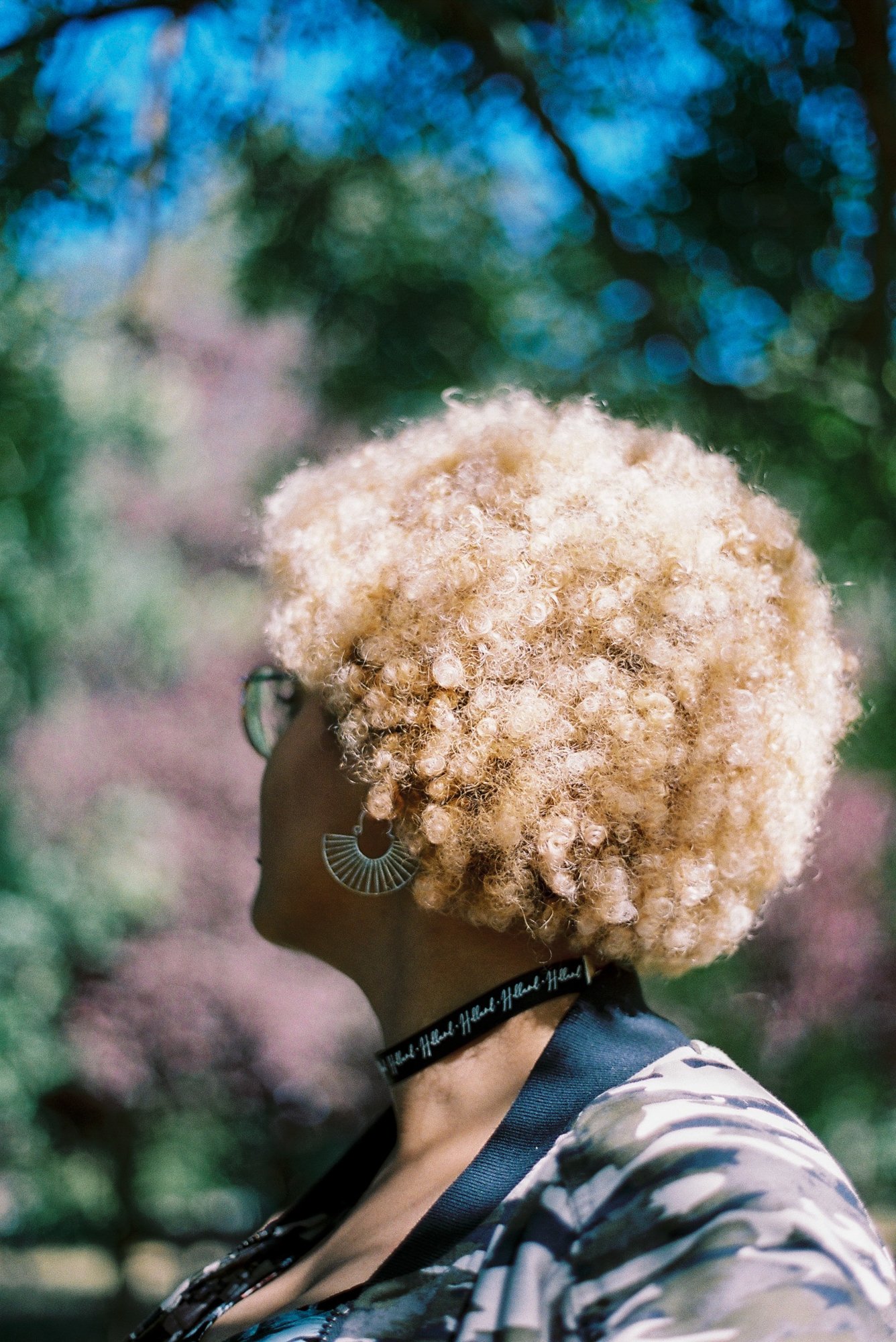Photo Journal Monday: Clara Watt
Caroline © Clara Watt
Images and text by Clara Watt
Photo Edited by Lucia Luzzani
The Hair Portraits
Clara is an award-winning Senegalese-Canadian visual artist and documentary photographer, whose work explores cultural identity and social justice issues including racial discrimination, gender and women's issues.
The Hair Portraits document and celebrate the wide spectrum of black hair, and the experiences of men, women and gender non-binary folks navigating the politics of living with black hair. Having grown up with curly, afro and unruly hair myself, I aimed for these portraits to spark conversations and change the narrative around long-standing euro/white-centric beauty standards, and to give black folk, like myself, the confidence to explore their deeply rooted relationship with black hair. Striking and at times intimate portraits shot on film are accompanied by quotes, detailing personal lived experiences, big chops, regrets, childhood trauma, workplace standards, funny anecdotes, and most of all pride associated with their black crowns. At the end of the day, hair is hair and it shouldn’t define who we are as humans. Unfortunately, that’s not yet a reality for the black community. Until then, these portraits offer knowledge, hope and a place for our voices to be heard through the many stories collected so far. I could not be more proud of how far The Hair Portraits have come, and how many continue to be inspired through them.
Arden l © Clara Watt
Arden ll © Clara Watt
Caroline -see first image, Caroline -: "Black hair is such a lightning rod for perceptions about identity and who gets to decide what is okay or not okay! This has placed so much pressure on black women, how they see it defining how others see them; affecting their own relationship with their hair and in turn how they define who they are. I am so pleased that we are at a stage where many black women are feeling they have much more choice themselves about how they wear their hair. Yet the systemic discrimination against black women in many spheres of life continues to be reflected in expectations about appearance – hair being an example of this. How anyone chooses to wear their hair is no one else’s business! Hair today, gone tomorrow! Then what – are you any less a person?"
Arden: “My hair represents my personality. Cutting it all allowed me to know myself on a deeper level. To my bare core. A lot of people assume that because I have a bald head I’m a bald person. The duality for me is that I am bald, which is a bold statement, but I am also quite introverted and very quiet. I find that I only express myself through my hair. Not many people hear my voice, but I let the hair do the talking. My mother encouraged me to straighten my hair. Especially being a lighter skinned person. She’d always say that my sister has straight hair, but she’s too dark. Whereas I was light skinned but my hair was too curly. There’s a culture within the Black-British community that either you’re raised to accept your culture, or you’re raised to assimilate to a white culture. And I was raise to assimilate.
Amelia © Clara Watt
Henrique © Clara Watt
Amelia: “I can make my curls more defined, it just takes so long and requires me twirling each curl around my finger. When I was younger my mom would do it for me, but it had to be done in the morning, because if I slept on it, it would flatten the curls. So I remember waking up at the crack of dawn to curl each strand on my head. People wake up that early to do their make-up for the day, I’d have to do it to not look like a pom-pom.”
Henrique: "Between my brothers and I, I’m the one with the lightest complexion & they used to make fun of my hair texture because apparently it’s the roughest between us. So I grew up being teased as 'the light skin with rough hair'. Now, I feel like my hair texture is the best visual representation of my blackness - the only physical evidence I have to respond to the constant assumptions that I am mixed race, which isn't what I identify as."
Pele © Clara Watt
Mikhail © Clara Watt
Pele: “I didn’t grow up doing a lot of hair care stuff. My mom’s Japanese, she didn’t know what to do with my hair. My dad’s Ghanaian. So I never learned all that stuff. With dreadlocks, they’re gonna do what they’re gonna do. Let them be. Take care of them, but you can’t be too bothered about how you want them to look. I’ve started to get more into dreadlock philosophy and self-love. Appreciation for being yourself. I feel my dreads have made me feel more free, so they match my personality.”
Mikhail: "My mom was a hairdresser. She was the one who originally did my hair. She really looked after me and wanted me to look nice. She didn’t have everything but that’s what she could do for me. When I was going through my ‘afro’ phase she was very against it. She wanted me to be in an environment where I could get a job. She was tough about looking a certain way so I could get ahead, and I completely understand where she was coming from. It’s a back and forth, but this was a hairstyle that we settled on, she was cool with it."











